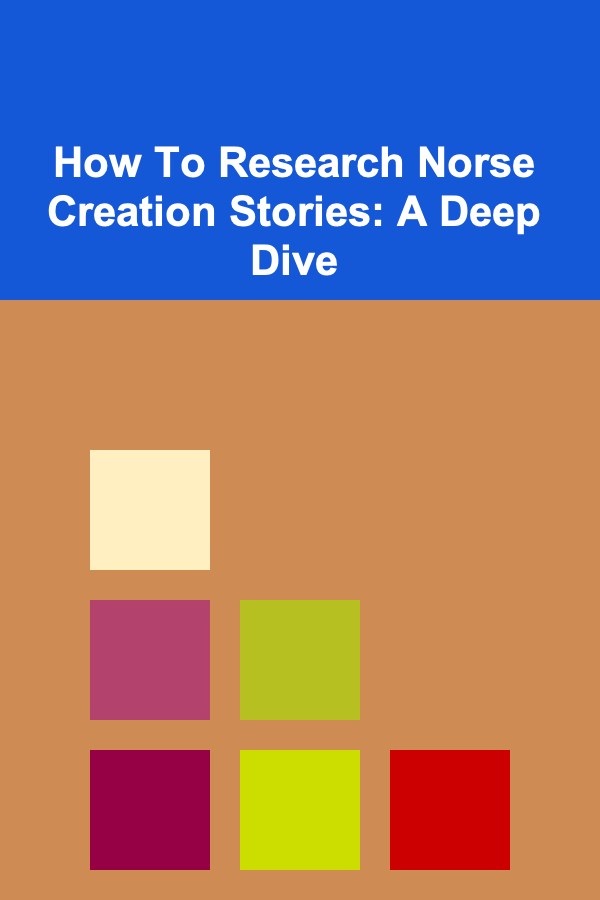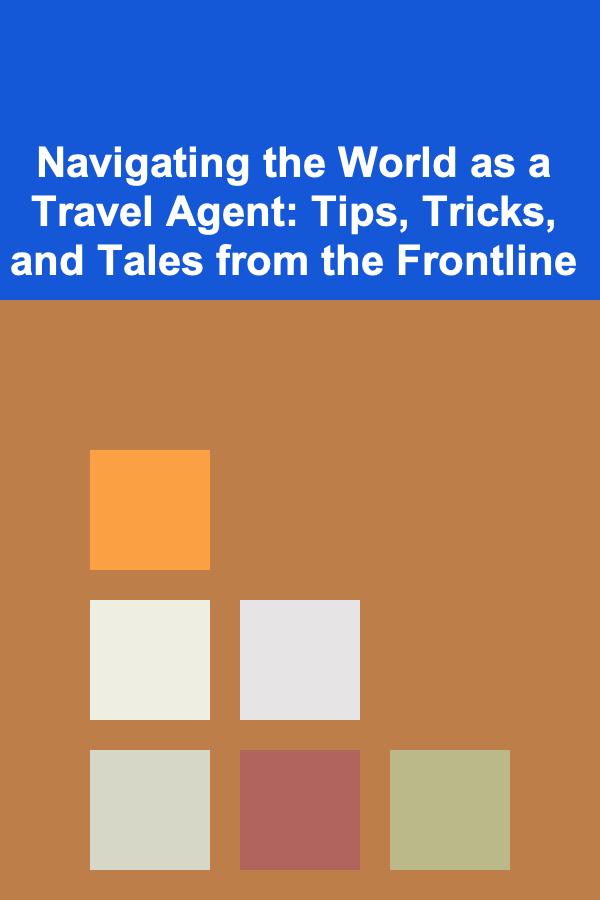
How To Research Norse Creation Stories: A Deep Dive
ebook include PDF & Audio bundle (Micro Guide)
$12.99$11.99
Limited Time Offer! Order within the next:

Norse mythology, with its rich tapestry of gods, giants, dwarves, and mythical realms, offers a compelling glimpse into the worldview of the pre-Christian Norse peoples. At the heart of this mythology lies the creation narrative, a complex and multifaceted story that speaks to fundamental questions about the origin of the cosmos, the nature of existence, and the role of humanity. Researching Norse creation stories, however, is not simply a matter of reading a single text. It requires navigating a fragmented and often contradictory body of sources, engaging with scholarly interpretations, and understanding the historical and cultural context in which these stories emerged. This article provides a comprehensive guide to researching Norse creation stories, covering key sources, essential scholarly approaches, and potential pitfalls to avoid.
I. Identifying and Accessing Primary Sources
The foundation of any serious research on Norse mythology lies in the primary sources. These texts, written in Old Norse and Icelandic, are the closest we can get to the original expressions of these myths. Unfortunately, no single, definitive "Norse Bible" exists. Instead, the Norse creation myth is pieced together from various sources, each with its own perspective and biases.
A. The Poetic Edda (Elder Edda)
The Poetic Edda , also known as the Elder Edda, is a collection of anonymously written Old Norse poems, likely compiled in the 13th century from much older oral traditions. While no single poem provides a complete account of creation, several are crucial for understanding different aspects of the story.
- Völuspá ("The Seeress's Prophecy"): This is arguably the most important text for understanding Norse cosmology and cosmogony. It presents a dramatic vision of the world's creation, its eventual destruction (Ragnarök), and its subsequent rebirth. It describes the primordial void of Ginnungagap, the meeting of fire and ice, the emergence of the giant Ymir, and the creation of the world from his body.
- Vafþrúðnismál ("The Lay of Vafþrúðnir"): In this poem, Odin engages in a wisdom contest with the giant Vafþrúðnir. Through their exchange, key details about the creation and early history of the cosmos are revealed, including information about Ymir's origins and the creation of the sun and moon.
- Grímnismál ("The Lay of Grímnir"): This poem contains descriptions of the various realms of the Norse cosmos, including Asgard (the home of the gods), Midgard (the realm of humans), and Jotunheim (the land of the giants). While not directly focused on creation, it provides valuable context for understanding the geography of the Norse universe.
Accessing the Poetic Edda: Numerous translations of the Poetic Edda are available. Some notable translations include:
- Lee M. Hollander's translation: A classic and widely respected translation, though the language can feel somewhat archaic to modern readers.
- Carolyn Larrington's translation: A more recent translation that is generally considered more accessible and accurate. Larrington's translation also includes extensive notes and commentary.
- Ursula Dronke's translation: Dronke's translation is highly regarded for its scholarly rigor and attention to the nuances of the Old Norse language. However, it is not a complete translation and only covers a selection of poems.
When choosing a translation, consider your research needs. For a general overview, Larrington's translation is a good starting point. For more in-depth analysis, Hollander's or Dronke's translations may be more suitable. Always compare different translations to gain a fuller understanding of the text.
B. The Prose Edda (Younger Edda)
The Prose Edda , also known as the Younger Edda , was written by Snorri Sturluson, an Icelandic historian, poet, and politician, around 1220 CE. Snorri's purpose was primarily to preserve and explain the mythology and poetic conventions of the Old Norse skalds (poets). The Prose Edda is divided into four sections, two of which are particularly relevant to the study of Norse creation stories:
- Gylfaginning ("The Deluding of Gylfi"): This section presents a coherent narrative of Norse mythology, including a detailed account of the creation of the world from the body of the giant Ymir. It is Snorri's most comprehensive retelling of the creation myth and serves as a crucial source for understanding the Norse worldview. It also provides descriptions of the gods, their roles, and the various realms of the cosmos.
- Skáldskaparmál ("The Language of Poetry"): This section focuses on the language and techniques of skaldic poetry. While not directly concerned with creation, it explains the origin of many kennings (poetic metaphors) that are derived from mythological stories, providing further insight into the cultural significance of the myths.
Accessing the Prose Edda: Similar to the Poetic Edda , numerous translations of the Prose Edda are available.
- Anthony Faulkes's translation: This is considered the standard modern translation of the Prose Edda. Faulkes's translation is accurate, accessible, and includes extensive notes and commentary.
- Jesse Byock's translation: Byock's translation is another reputable option, known for its readability and clear presentation of the text.
While Snorri's account is invaluable, it is important to remember that he was writing centuries after the Viking Age and that his interpretation may have been influenced by Christian thought and his own political agenda. It is therefore crucial to compare Snorri's account with the older poems of the Poetic Edda.
C. Other Old Norse Texts
Beyond the Eddas, other Old Norse texts can provide valuable insights into Norse creation beliefs.
- Sagas: While primarily focused on historical or legendary events, some sagas contain mythological elements that shed light on Norse cosmology. For example, Ynglinga saga , part of Snorri Sturluson's Heimskringla, traces the lineage of the Swedish kings back to the gods, providing a unique perspective on the relationship between mythology and history.
- Skaldic Poetry: Skaldic poetry, composed by court poets for Viking Age rulers, often alludes to mythological events and figures. Analyzing these allusions can reveal how the creation myth was understood and used in a specific historical context.
- Runestones: Although runestones are primarily commemorative monuments, some contain inscriptions that refer to mythological themes, including the creation of the world. These inscriptions offer glimpses into the beliefs of ordinary people during the Viking Age.
Accessing these sources can be more challenging, as they are often less widely translated than the Eddas. However, many academic libraries and online databases offer access to critical editions and translations of these texts.
II. Applying Critical Methodologies
Once you have access to the primary sources, the next step is to engage with them critically. This involves applying different analytical methodologies to interpret the texts and understand their historical and cultural significance.
A. Textual Analysis
Textual analysis involves a close reading of the primary sources, paying attention to the language, structure, and imagery used. This includes:
- Identifying key themes and motifs: What are the recurring ideas and patterns in the creation stories? For example, the theme of chaos versus order, the motif of the primal giant, and the importance of sacrifice are all central to the Norse creation myth.
- Analyzing the use of symbolism and metaphor: How are abstract concepts like creation and destruction represented through concrete images? Understanding the symbolic language of the myths is crucial for interpreting their meaning.
- Examining the relationship between different sources: How do the accounts in the Poetic Edda and the Prose Edda differ? What are the points of convergence and divergence? Analyzing these differences can reveal the evolution of the creation myth over time.
B. Comparative Mythology
Comparative mythology involves comparing Norse creation stories with those of other cultures. This can help to illuminate the unique features of the Norse myth and to identify broader patterns in human storytelling. Consider comparing the Norse creation myth to:
- Other Indo-European creation myths: Norse mythology is part of the larger Indo-European tradition. Comparing it to creation myths from other Indo-European cultures, such as those of ancient Greece or India, can reveal shared origins and common themes.
- Near Eastern creation myths: The ancient Near East, particularly Mesopotamia, produced some of the earliest known creation myths. Comparing the Norse myth to those of Mesopotamia can highlight similarities and differences in how different cultures imagined the origin of the world.
- Indigenous creation myths: Exploring creation stories from various indigenous cultures around the world allows for a broader understanding of the diversity of human perspectives on the origin of the universe.
By comparing Norse myths to those of other cultures, you can gain a deeper appreciation for the universality of certain human concerns and the cultural specificity of how those concerns are expressed.
C. Historical and Cultural Contextualization
Understanding the historical and cultural context in which the Norse creation stories emerged is essential for interpreting their meaning. This involves considering:
- The Viking Age (c. 800-1100 CE): This period was characterized by raiding, trading, and exploration. Understanding the social and political dynamics of the Viking Age can help to explain the values and beliefs reflected in the myths.
- Pre-Christian Norse religion: The Norse creation stories were part of a larger religious system that included a pantheon of gods, a complex system of rituals, and a belief in the afterlife. Understanding the beliefs and practices of pre-Christian Norse religion is crucial for interpreting the myths.
- The conversion to Christianity: The conversion of Scandinavia to Christianity in the 10th and 11th centuries had a profound impact on Norse culture. Understanding the process of conversion and the interaction between Christianity and paganism can help to explain the changes that occurred in the Norse creation myths.
By placing the Norse creation stories in their historical and cultural context, you can avoid anachronistic interpretations and gain a more nuanced understanding of their significance.
D. Structuralism
Structuralism, a theoretical approach popularized by Claude Lévi-Strauss, seeks to uncover the underlying structures and patterns that govern human thought and culture. In the context of Norse mythology, structuralism can be used to analyze the binary oppositions that are central to the creation stories, such as:
- Chaos vs. Order: The creation myth often begins with a state of primordial chaos (Ginnungagap) that is gradually transformed into an ordered cosmos.
- Fire vs. Ice: The interaction of fire and ice is a crucial element in the creation of the giant Ymir and the subsequent formation of the world.
- Gods vs. Giants: The conflict between the gods and the giants is a recurring theme in Norse mythology, representing the struggle between order and chaos.
By analyzing these binary oppositions, you can gain a deeper understanding of the underlying logic of the Norse creation stories and how they reflect the fundamental human need to impose order on the world.
III. Common Pitfalls and Challenges
Researching Norse creation stories can be a rewarding but also challenging endeavor. Here are some common pitfalls to avoid:
A. Relying Too Heavily on Snorri Sturluson
As mentioned earlier, Snorri Sturluson's Prose Edda is an invaluable source of information about Norse mythology. However, it is important to remember that Snorri was writing centuries after the Viking Age and that his interpretation may have been influenced by Christian thought. It is therefore crucial to compare Snorri's account with the older poems of the Poetic Edda and to be aware of his potential biases.
B. Assuming a Unified and Coherent Mythology
Norse mythology was not a unified and coherent system of beliefs. It was a collection of stories and traditions that varied from region to region and from time period to time period. There is no single, definitive version of the creation myth. Instead, there are multiple, often contradictory accounts. It is important to acknowledge this diversity and to avoid trying to impose a false sense of unity on the mythology.
C. Ignoring the Oral Tradition
The Norse creation stories were originally transmitted orally. By the time they were written down, they had likely undergone significant changes and adaptations. It is important to consider the role of oral tradition in shaping the myths and to be aware of the limitations of relying solely on written sources.
D. Falling into Romantic or Neo-Pagan Interpretations
Norse mythology has been subject to various interpretations, including romantic and neo-pagan approaches. While these interpretations can be interesting, it is important to distinguish them from scholarly analysis and to be aware of their potential biases. Avoid uncritically accepting interpretations that are based on modern agendas or that romanticize the Viking Age.
E. Neglecting Archaeological Evidence
Archaeological evidence, such as artifacts, burial sites, and runestones, can provide valuable insights into Norse mythology. Ignoring this evidence can lead to an incomplete and potentially inaccurate understanding of the myths. Consider incorporating archaeological findings into your research whenever possible.
IV. Resources for Further Research
Numerous resources are available to assist in researching Norse creation stories.
A. Academic Journals
Academic journals such as Saga-Book , Scandinavian Studies , and Journal of English and Germanic Philology publish articles on Norse mythology and related topics. These journals are a valuable source of scholarly research and analysis.
B. Scholarly Books
Many excellent scholarly books are available on Norse mythology. Some notable examples include:
- Myth and Religion of the North: The Religion of Pre-Christian Scandinavia by E.O.G. Turville-Petre: A comprehensive overview of pre-Christian Norse religion.
- Norse Mythology: A Guide to the Gods, Heroes, Rituals, and Beliefs by John Lindow: An accessible and informative introduction to Norse mythology.
- Gods and Myths of Northern Europe by H.R. Ellis Davidson: A classic study of Norse mythology, focusing on the historical and cultural context of the myths.
- The Lost Beliefs of Northern Europe by Hilda Ellis Davidson: Explores lesser-known aspects of Norse paganism and folklore.
C. Online Resources
A wealth of online resources is available for researching Norse mythology. However, it is important to be discerning and to evaluate the credibility of the sources. Some reliable online resources include:
- The Viking Society for Northern Research: Provides access to scholarly articles, translations, and other resources.
- The Skaldic Project: A database of skaldic poetry, with translations and commentary.
- Academia.edu and ResearchGate: Platforms where scholars often share their published and unpublished research.
V. Conclusion
Researching Norse creation stories is a complex and rewarding journey that requires a combination of careful textual analysis, comparative mythology, historical contextualization, and critical thinking. By engaging with the primary sources, applying relevant methodologies, and being aware of potential pitfalls, you can gain a deeper understanding of the rich and fascinating world of Norse mythology. The creation stories, though fragmented and sometimes contradictory, offer a powerful glimpse into the worldview of the pre-Christian Norse peoples and their understanding of the origin of the cosmos, the nature of existence, and the relationship between humans and the divine. Remember to always consult multiple sources, consider different perspectives, and remain critical of your own assumptions. The exploration of these myths is a continuing process, and each generation brings new insights and interpretations to bear on these ancient narratives.

How to Create a Stunning Holiday Entryway to Greet Guests
Read More
How to Decorate Your Home for Halloween with Style
Read More
How to Make Money Online as a Scriptwriter: 10 Actionable Ideas
Read More
How to Sell Homemade Organic Bath and Body Products on Etsy: An Actionable Guide
Read More
Navigating the World as a Travel Agent: Tips, Tricks, and Tales from the Frontline
Read More
Understanding the Psychology of Habit Formation for Weight Loss
Read MoreOther Products

How to Create a Stunning Holiday Entryway to Greet Guests
Read More
How to Decorate Your Home for Halloween with Style
Read More
How to Make Money Online as a Scriptwriter: 10 Actionable Ideas
Read More
How to Sell Homemade Organic Bath and Body Products on Etsy: An Actionable Guide
Read More
Navigating the World as a Travel Agent: Tips, Tricks, and Tales from the Frontline
Read More